Virginia Colwell: Profile of the Artist
by Alexis Brocchi
Virginia Colwell lives and works in Mexico City—her work examines the space between official and unofficial histories, and the poetic ambiguities of truth and fiction in historical narratives. Often she begins her artworks with stories found in her deceased father’s FBI archive, which contains materials that he collected during his career as an agent. Her drawings, sculptures, and videos reinvestigate various cases in the archive through site visits, interviews, archival research, and declassified documents.
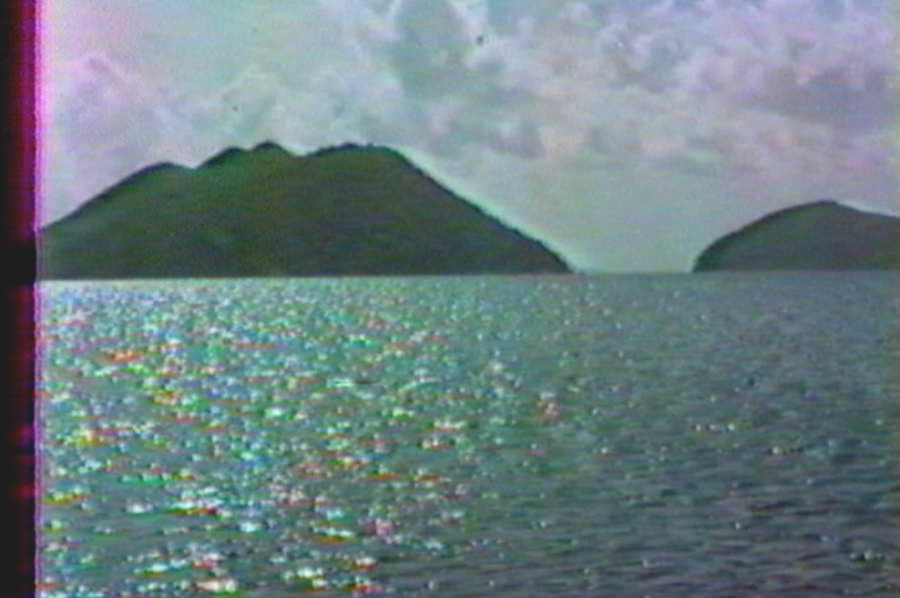
Alexis Brocchi: Your work is greatly influenced by and centered around history—interacting with the past in many ways, while also building a history of its own in the process. What do you think the importance is of creating an identity through history? How do you go about this with your work?
Virginia Colwell: I believe that one’s identity is in many ways built upon the narratives of history, whether these are personal, familial, communal, or national narratives. These stories guide our lives, give structure to our place in the world, and justify our actions. Yet, often historical narratives are not as clear or as solid as we assume them to be. In the historical research I do as part of my art practice, I get to see the shaky foundations of an event whose history is otherwise recounted as a clear narrative. By digging up the original documents used for building historical narratives (and thus identities), one can see that subjectivity and fragility of the building blocks of a history.
If my artworks build histories, I would argue that they are building messy and fragile ones that balance on tiptoe—barley held together with string and scotch tape. In my works, I am not really interested in revealing ‘what happened,’ but instead want to question our experience of history and our relationship to the past.
AB: The content and material used in your work are both very personal—your father’s life is a major theme and materials used include government documents such as written accounts of events and interview transcripts. How do you choose the physical objects that appear in your works? I am very interested in how you go about compiling information and organizing these documents such as the FBI and government documents, address books, transcripts etc. Are these things that you just happen upon in your research, or is it meticulously planned out?
VC: Normally, I choose objects or images that align with certain metaphors that I am working with—for example, in my video The Following (2011), the image of the tightrope walker Rick Wallenda completing his grandfather’s failed tightrope walk evokes a search for the past and the tracing of our forefather’s footsteps. In this instance, I did not go looking for the video—I was lucky that my father filmed these scenes, and I grew up watching the clip as part of my family’s home videos.
However, with other projects, I go looking for archives or individual stories that I think will illuminate some part of the past I am studying. Usually, in the very early stages of a project, I establish parameters for my research by identifying a period of time, a place, or a concept that guides the research. If I do not establish these boundaries early on, I find myself swimming in too much information and spending too much time researching rather than making artworks. I often have to remind myself that I am researching in order to make artwork, not write a doctoral dissertation! Yet despite my best attempts to plan out my research, often a project’s parameters are defined for me because of the restricted availability, loss, or lack of documents. For example, in my research on Arturo Durazo, I could ask for declassified FBI files but I could not get anything out of the Mexican archives—only in some alternate universe would archives about Arturo Durazo be made public in Mexico!—but with the FALN research, I assumed that the FBI was not going to give me anything about the case because it is still active (one FALN member lives in exile in Cuba), so most of the documents I used came from US court proceedings that used FALN communiqués and political papers as evidence. Also with the FALN case, I was able to get documents from the Mexican Secretary of State in 2010 but when I went back to the archive to review those folders again in 2015 they had lost all record of the case. This is how it goes.
At times my research takes a haphazard turn—interviews dramatically change my perspective, shifting a whole project, and in a lucky break, I stumble upon important documents I was not even looking for. But in general, my research is planned out because I am constantly questioning why a topic is important to me and what I want to say about the research and what documents, interviews, or site visit might bring into focus the poetics of the past.
It’s both an intuitive and an academic methodology.
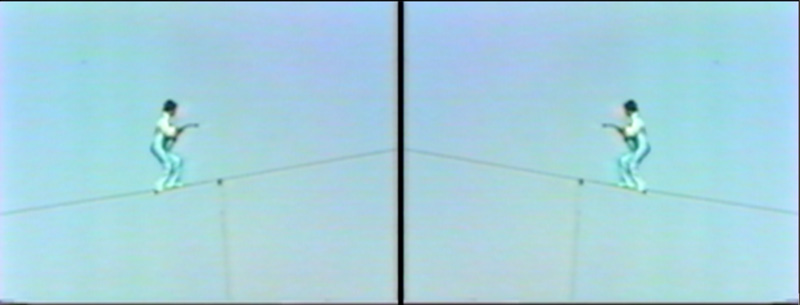
AB: An ‘intuitive and an academic methodology,’ I think this shows strength in the research—both are necessary components in my opinion. The approach to research determines the results completely, which is a wonderful insight into your practice. What sparked your interest in intertwining art and history, or making artwork about historical events? You could have easily been a very successful historian.
VC: I actually do not think I would make a very good historian! I am far too much of a doubter. I like mixing art and history because art can open up different spaces for understanding our relationship with the past, which a historian’s history might not achieve due to the profession’s rules of what makes a creditable history (footnotes, fact-checking, philosophical frames of historical thought, etc). Instead, I decided to interweave my art practice with a critique of history because the past is one of those topics that interests me endlessly. I did not really choose it on purpose, it is more like an itch that I cannot seem to scratch, which bothers me, or the gum stuck to the bottom of my shoe. I just can’t shake it.
AB: The skeptic is admirable, and one that we should listen to. With the nature of your work, would you say you are drawn to the more skeptical accounts of the past, or seek out the skepticism as fuel for your projects?
VC: I am drawn to the skeptical. I enjoy finding a line in a document where the author clearly states that he or she is unsure of the events being reported. For example, I am currently reading over some State Department documents from the seventies about a civil war in Central America and in one document I highlighted the following:
“Caveats: There are serious limitations on the accuracy of this and subsequent reports.”
Now, an interest in the skeptical in regards to history could seem nihilistic, but for me it is not that at all. Instead, I am attracted to the voice of the writer, and how he or she portrays the complexity of a past event, [along with] their uncertainty in explaining this event in detail to someone who was not there.
For me, that skeptical voice rings clear—it seems more honest about the messiness of how we experience the world.
AB: There is a very present and consistent theme of duality in your work, most obviously through your use of two channel video works with opposing images. It is one of the things that drew me to your body of work, it seems very natural and necessary. Can you expand on this physical and figurative duality?
VC: Essentially, I am drawn to sticking myself in the middle of two historical arguments, or two dueling narratives—for example the perspective of FBI documents and the perspective of the people they investigated. That grey area in the middle of the two extremes is interesting to me and I feel that the grey area is somehow closer to a historical truth. If there is such a thing…
In the physical sense, I go looking for the documents or for interviews that help to establish these two clear poles of perspective in order to anchor the boundary lines of my research. Metaphorically, in works like A Diptych, A Chronicle (2016) this duality takes the form of the different perspectives of the islands or in The Song of Source 1 (2013), the double meaning of the paper toy of the bird and the birdcage echoes the duplicitous character of an FBI informant.
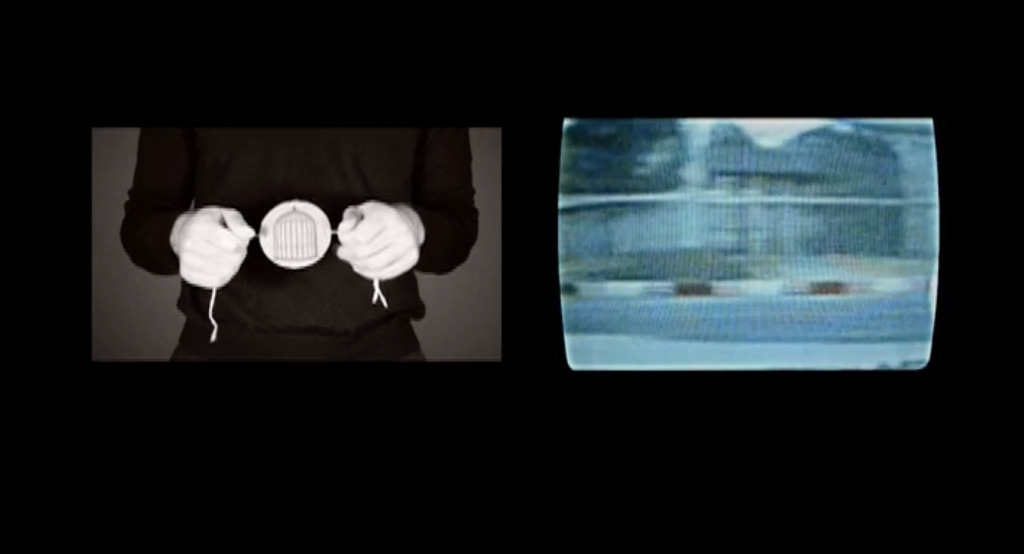
AB: As you know, I was very excited to have your work A Diptych, A Chronicle (2016) included in the EXPO VIDEO satellite program this October in Venice because it shows the power of this duality. Most obvious is the juxtaposition of your father’s film of the Caribbean islands from the water and your film of the sea from the shoreline. It is a very interactive way to respond to your father as well as respond to history—a country’s history, and a personal history. Do you think of this as creating an identity of sorts?
VC: I do not think that ‘identity’ is the right word for what I am creating in A Diptych, A Chronicle—in the work I point out that the history of the FALN is not clear, and is full of conflicting facts and voices, therefore, making statements in general about identity are difficult to muster. However, I see how one could argue that the multiple dualities of the video acknowledge the complex and sometimes contradictory characteristics of Puerto Rican nationalism.
In the end, the layers of the video’s duality (as illustrated by the distance between my father’s perspective of events and my own, the two vistas of the islands, and the contradicting rumors about the FALN’s history) create a ping pong game of perspectives in which I am asking the viewer to be analytical with me, and entertain both sides of a story about revolutionary radicalism. Specifically, I want the viewer to feel as [uncertain] as I do when the voices from interviews ring in my head, contradicting the black and white typewritten reports that seemed to assure me that what happened was clean-cut and clear.
AB: Italo Calvino’s Invisible Cities explores utopian cities that do not necessarily exist, which can also be compared to many historical accounts of different people and parties. I think a strength of your work is interrogating the idea of imagined or created histories. Is it your goal to expose a truth or, on the other end of the spectrum, try to understand the experiences of those who “wrote” these accounts?
VC: I am not so interested in exposing a truth, because the works are usually so filled with my personal doubts about our limitations for knowing the past—the idea of ‘truth’ at all to me seems a bit silly. On the other end of the spectrum, I am more comfortable trying to understand those who wrote historical accounts or the actors who took part in past events. My interest here lies in my imagination of these people—the ways I try to empathize with them and reconstruct them in my mind. But my comfort with all this is due to the fact that the act of ‘trying to understand’ is a creative act; it admits my subjective positioning and my imagining of an inaccessible past event or person based on my interpretation of what I have read or my own experience. This sort of understanding, while informed by lots of documents, site visits or interviews, is not truth-based but instead feeling-based, and seems more appropriate for art making.
AB: I really love that you said understanding or trying to make sense of things is a creative act—both for yourself, and your viewers—which allows a certain accessibility. Would you agree? What is your opinion on accessibility as a core focus in your practice?
VC: The issue of accessibility is a constant in my art practice. I work with really complex stories and in a single work there are often several layers of history: my personal history with my father’s history, the written history and the unwritten, the local versus international, etc. I feel that I am asking a lot of the viewer to take the time to sort out these layers of story.
So I remind myself that if I am going request this much of the viewer’s time and energy, at least I should be nice to the viewer! I do not want the viewer to feel that these works, despite their extensive research and complex histories, are inaccessible, or have a dogmatic, authoritative, or esoteric feel. To avoid this, I try to make visible the hand-made quality of a piece and the time that it takes to construct it. It sounds a little goofy but when I make intricate drawings or delicate paper maquettes, I am not trying to show off my skill with materials—but rather, I want to speak to the viewer and say: slow down, take this in, spend time here, with me.
AB: In describing A Diptych, A Chronicle (2016), you have referenced “phantom geographies of Utopia” and a “real and imagined free island of Puerto Rico.” Can you delve into these ideas deeper—how are they connected?
VC: In reference to the video, the phantom geographies of Utopia are made up of both the real and imagined possible futures for a free island of Puerto Rico which the Puerto Rican independence movement of the 1970s fought for (the FALN was a radical armed wing of this movement).
In other words, there is the real island of Puerto Rico: its mountains, its streets, colonial forts, its agriculture and people; and then there was the independence movement’s imagined future for the island: socialist governance with new housing policies, land redistribution, and education reforms. The anticolonial dreams of this future Puerto Rico are laid over the actual realities of the island’s geography sort of like a like a tablecloth being laid on a table.
However, as of yet, this dream has proved unattainable, haunting the island since the Spanish conquest. The calls for freedom rise and fall across generations and are never fully realized but refuse to go away; a persistent ghost of a island utopia that neither the Spanish nor the Americans could exorcise.
AB: In line with the phrase the personal is political—I would argue that personal records are still valuable and a worthwhile “archive” or collection, even if never completed.
VC: Yes, you are right—personal archives, even incomplete ones, are valuable. However, I think that I am avoiding thinking of the future of my own archive or imagining its importance. That just seems to smack of legacy and I am only thirty-six years old! In my opinion, to think that there is an enduring value in my archive puts the cart before the horse. First my artworks would have to generate this cultural value. Afterwards I can take the worth of my archive more seriously.
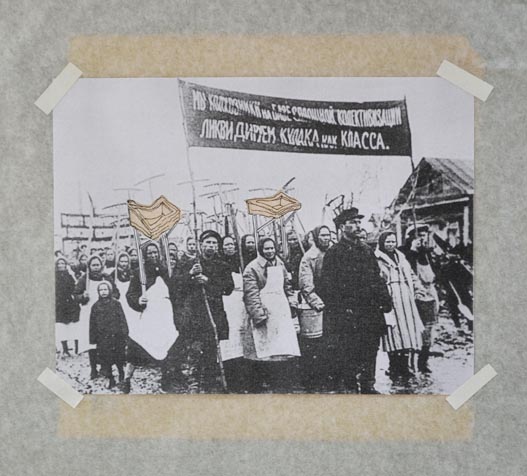
AB: I would like to speak about your work Goodbye to All That (2014), sculptural work among your many videos, and a wonderful reassessment of a country’s interactions with its past and its progress toward the future: the Soviet Union and its museums. Museums can have a dated feeling, especially in exhibiting their furniture—by replicating the shelving displays in fabric structures, you created a physical commentary on the “fragile narratives that museum furniture supports” and the literal/figurative “framing of a historical truth.” What are your thoughts and hopes for museums that directly interact with our histories and archives?
VC: Considering that museums are so expensive and politically sensitive, I hope that museums can stay open and continue to provide the space need for archiving. The exhibitions in a museum are normally a small glimpse of everything they have in storage, and so I think it is important to put emphasis on this part of the museum although it is not as glamorous as the objects illuminated in exhibition cases. As far as the museum’s role as a portal to interact with the past, my hope is that we maintain a cultural value for this and that ambitious curators who wish to experiment with new narratives of history can find museums that welcome reinterpretations of their archives and the multiple pasts hidden within them. In the US we often think that this openness is a given but in so many parts of the word and even in the US, museums and their archives are extremely conservative institutions.
AB: You have commented that you are neither a historian nor a journalist, but I would argue that you do the work of both—what is your opinion on the artist’s role in preserving and making sense of the past?
VC: You are right; I do use many of the tools of the historian or journalist, but I like to clearly mark that I am neither of these because I do not do my research according to the codes ethics that guide their work. I feel it is an important difference. As an artist working with the past, I think that we have the freedom to actually not make sense of the past but instead explore its senselessness. Both the work of journalist and historian follow narrative structures of storytelling that make sense of a past event based upon fragments of evidence that they put into a narrative form. As an artist, I can look at those fragments of evidence, reconfigure them, mix them with fiction, turn them into metaphors, and highlight their fragmentary nature without needing to pull them together in a narrative or provide footnotes to back up my statements. Perhaps by defying the codes of conduct that guide the work of the journalist or historian, the work of the artist is more honest about the nature of the past as a complex, fragile, and subjective interpretation of an event. For me the artist can capture the poetry of the past and open it up to new meanings without leading the viewer to a clear ending.
AB: In your piece The Song of Source 1 (2013), you very cleverly trace the possibility of outcomes that can result in a single event, through words, and a simple bird/bridge cage spinning toy. The toy acts as a strong symbol of the unknown—just as the island in A Diptych, A Chronicle becomes a source and metaphor for the unknown—
VC: Yes—the paper toy in the video is a stand-in for both the dual role that the informant, Source 1, played in the downfall of the fugitive Arturo Durazo. Additionally, the image of the toy of the bird and the birdcage signal my wonderment with the subtle gestures that can trigger a certain chain of events: how fast one twists the strings on the toy determines whether the bird appears caged or free. In the various possible histories that the video imagined for Source 1, you could say that I am highlighting the unknown outcome. Especially considering that Source 1 was playing a dangerous game, and perhaps by stupid luck or cunning he never completely became the trapped mockingbird of the spinning toy.
Similarly, I used the island in A Diptych, A Chronicle as a literal metaphor for one’s perspective or positioning toward the past. Yet, one could argue that the island in the video symbolizes the unknown in the sense that I use the metaphor of seeing the island from the water and seeing the water from the island to emphasize the various perspectives that are hard to imagine unless you literally put yourself in a certain place. How can you know how an event looks from far away if you witness it up close? How can you know the details of an event if you only saw it from afar?
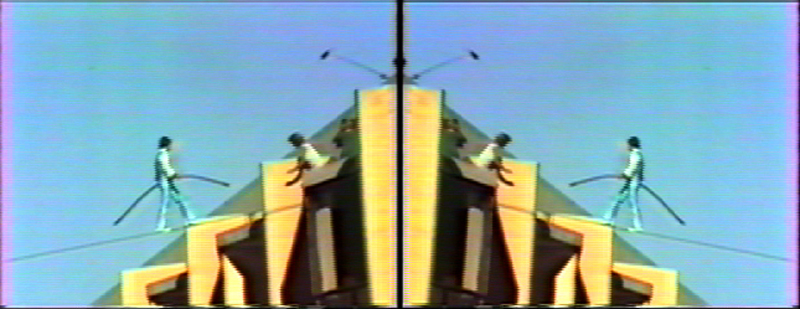
AB: In your work Landscape / History (2009), depicting explosions from WWI in a slowed down version, the goal is to show that a “landscape is an ever-constant background that stages the events of history.” The work functions almost like a painting. The landscape, like a narrative, is a vital component and becomes an object of its own. Why highlight it in this way?
VC: I made that piece before I started to work intensely with archives and surprisingly, the relationship between landscape and history is a theme that has survived the shifts in my practice over the years. When I made Landscape / History I wanted to highlight the elusiveness of the landscape of a past event: we can visit the landscape of Ypres but of course we can’t see the landscapes of Ypres of the war. Additionally, many of the clips in the video come from movies made about WW1 and so they themselves, are approximations of that landscape of history.
It is interesting that you link landscape and narrative, because in a way both become invisible when we are listening to a history: while they provide the arrangement and the setting of a history, rarely do we deeply question how they structure our understanding of the past.
Colwell has lived and worked in Mexico City since 2011. Her artistic research focuses on the American South, the Caribbean, and Mexico. She has been an artist in residence with Beta-Local’s La Práctica program in San Juan, Puerto Rico; Untitled art fair’s Fountainhead Residency program in Miami, United States; and the multimedia art center Hangar in Barcelona, Spain. Her works have been exhibited at the Center for Contemporary Art in Vilnius, Lithuania; the Hirschorn Museum in the United States, El Centro de Arte Santa Monica in Barcelona and most recently, at the Centro Cultural Félix Varela during the 12th Havana Biennial. Colwell has received numerous awards including the Virginia Museum of Fine Arts Award, a Pollock Krasner Foundation Fellowship, and a Jumex Foundation Grant.